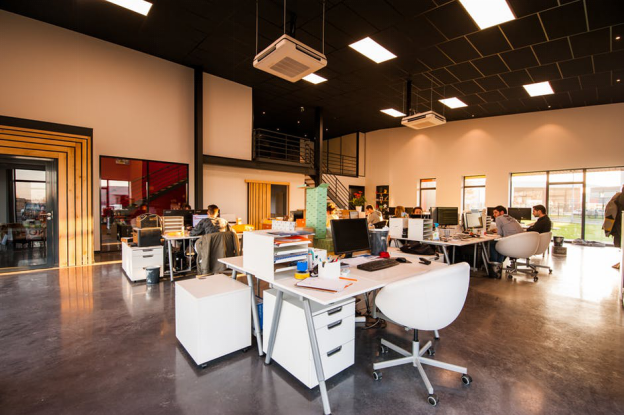Selecting the Right Office Building: What You Need To Know
- By seoserviceusa93@gmail.com
- •
- 08 Dec, 2018

Whether you’re expanding your business and need a larger office space or are starting up a new business altogether, several factors play a part in whether the place satisfies your business needs. From looking at the location of your future space and determining safety and accessibility to paying attention to zoning codes of your city, the whole process can get quite daunting.
Luckily for you, here we have a short list of some of the most important factors you need to keep in mind when selecting an office space:
The Location
The first and most important factor: the location of the place. Look for a property that’s in an easily accessible part of town, both for your clients and your employees. Safety is paramount; you want to ensure your clients feel secure enough to return to your business, so having an office in a crime riddled part of time will affect your brand image and revenue. Also consider accessibility to coffee places, recreational facilities and gyms to keep both staff and clients happy.
City zoning laws may also prevent specific businesses from holding operations in particular parts of the city. Commercial properties in residential areas are rarely allowed, so make sure to find out the areas’ particular zoning codes before making your purchase!
Remember, if the price seems suspiciously cheap for a fairly good property, there’s likely a reason behind it!

The Building
Your employees are going to be working in your office space for more or less 8 hours every day. They want a place that’s roomy, secure and free from burglaries, break-ins and any other kind of crimes. On the other hand, the first impression a potential client will have of your business will actually be based on your office space! As such, if your office is in a shared location with multiple other firms, it might help to know who will be managing the building and front desk itself.
The Office Space
A cramped, noisy office space may reduce productivity. As a general rule, your office space should have a minimum of 70 square feet per person, though this may change depending upon your business’s individual needs and your budget. You also want to keep a little extra room in case you plan to expand in the next few years or you’ll have to go through the process all over again!
A business that requires high levels of concentration from its employees with an office in a busy, noisy neighborhood without proper soundproofing could prevent your employees from working as well as they can.
Get In Touch With Toronto’s Leading Commercial Brokerage
A full-service commercial real estate brokerage, Pivotal Commercial Realty houses some of the best CRE agents in the city, and has been helping customers make better real estate decisions for well over a decade. We have successful transactions in more than $100 million worth of commercial real estate, and over one million square feet of leased land since our inception, truly earning our place as a leading brokerage of Toronto.
Contact us today to book one of the top realtors in the country.

Before you go ahead and sign any papers to purchase commercial real estate in Toronto, spend some time learning and understanding the market.
Investors in commercial real estate have to consider the following before they decide where they want to put their money:
Interest Rates
For the first time in 7 years, the Bank of Canada increased its interest rate in 2017. The interest rate set by Bank of Canada has a direct impact of the on the cost of taking out a variable rate mortgage as well as other loans.
Fluctuations in the Bank of Canada interest rates also influences the growth of corporations and consumer spending, which impacts the demand for both residential and commercial real estate.

Investors all over the globe think of Canada’s commercial real estate market as a safe haven. Even though there is some uncertainty about the rise of interest rates, the contrast between tight supply and growing demand for real estate in the country has been a driving force in the real estate market.
The commercial real estate market continues to be viewed positively by international real estate investors with Toronto and Vancouver being the most popular destinations. In 2018, Toronto was considered one of North America’s major real estate markets to invest in. In 2019, both Toronto and Vancouver are expected to be in the continent’s top 3 destinations.
The growth in commercial real estate is being pushed by the increased sales in office buildings. Even the political uncertainty between US and Canada did not hamper the success of commercial real estate in the country.
Major Markets
In 2018, Canada’s commercial real estate sector hit a record breaking $36.2 billion. This growth can be attributed to the increasing demand of industrial, office, retail, multi-family units and ICI land.
Those looking to invest in commercial real estate in Canada should consider Toronto, Vancouver, Calgary, Montreal and Ottawa. In 2017, most of the growth in the sector was driven by office buildings but in 2018, industrial real estate led the way.
In the near future, the demand for industrial real estate is expected to rise due to the increase of e-commerce business in the country that are looking to build fulfillment centers nearby for fast and easy delivery.

The commercial real estate market in Canada is continuing to flourish. However various factors are expected to make bring changes to the landscape in the future.
2018 proved to be a record-setting year for the commercial real estate sector in Canada due to an influx of new projects and high occupancy rates. With that being said, property owners are advised to monitor fluctuations in the market. Like all real estate, the commercial real estate sector of Canada is prone to disruption.
Let’s take a look at the key disrupters in commercial real estate in Canada:
Shared Workspaces
There has been a dramatic shift in the way people work in the country. Canada is experiencing a boom in the start-up community , many of which are led by Millennials.
Traditional office spaces are being replaced with co-working spaces that are designed to enhance collaboration, allow for greater flexibility and lower operational costs at the same time. Open offices are much cheaper than conventional cubicles. Younger professionals have found a way to work with limited office space.
Landlords can’t just lease out their building to select tenants, they have to redevelop their office space so it caters to the demand of the modern workforce. This can involve offering flexible suites or open concept office spaces.
